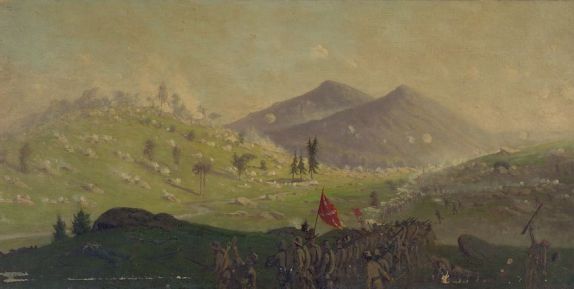Little Round Top is one of the most well-known historical sites in the United States. This small hill south of Gettysburg has often been called the “key” to the Union position during the battle, and some have stated that if it had fallen to the Confederates on the afternoon of July 2, 1863, the United States would have forever been split in two. Garry Adelman traces the growth of the popularity of the hill and assesses the military situation at the time when Little Round Top might have fallen into Confederate hands. He argues that the significance of Little Round Top has been exaggerated, and even if Confederates had captured Little Round Top, they had only a small chance to hold it.
The Myth of Little Round Top Part 1: Gettysburg LBG Garry Adelman
In today’s post, Garry Adelman introduces us to the series, and shows us the initial placement of soldiers and Confederate assaults on the southwest face of Little Round Top.
The Myth of Little Round Top Part 2: Gettysburg LBG Garry Adelman
In today’s post, Gettysburg Licensed Battlefield Guide Garry Adelman shows the attack on the 20th Maine Infantry, and explains how the Little Round Top legend slowly grew over time.
The Myth of Little Round Top Part 3: Gettysburg LBG Garry Adelman
In today’s post, Gettysburg Licensed Battlefield Guide Garry Adelman continues his story of how Little Round Top’s importance grew over time, and showed us the strength of both armies at this critical point on the evening of July 2, 1863.
The Myth of Little Round Top Part 4: Gettysburg LBG Garry Adelman
In today’s post, Garry concludes his Myth of Little Round Top series by pointing out Union artillery positions on Little Round Top and their effectiveness or lack of effectiveness on July 3, 1863.




